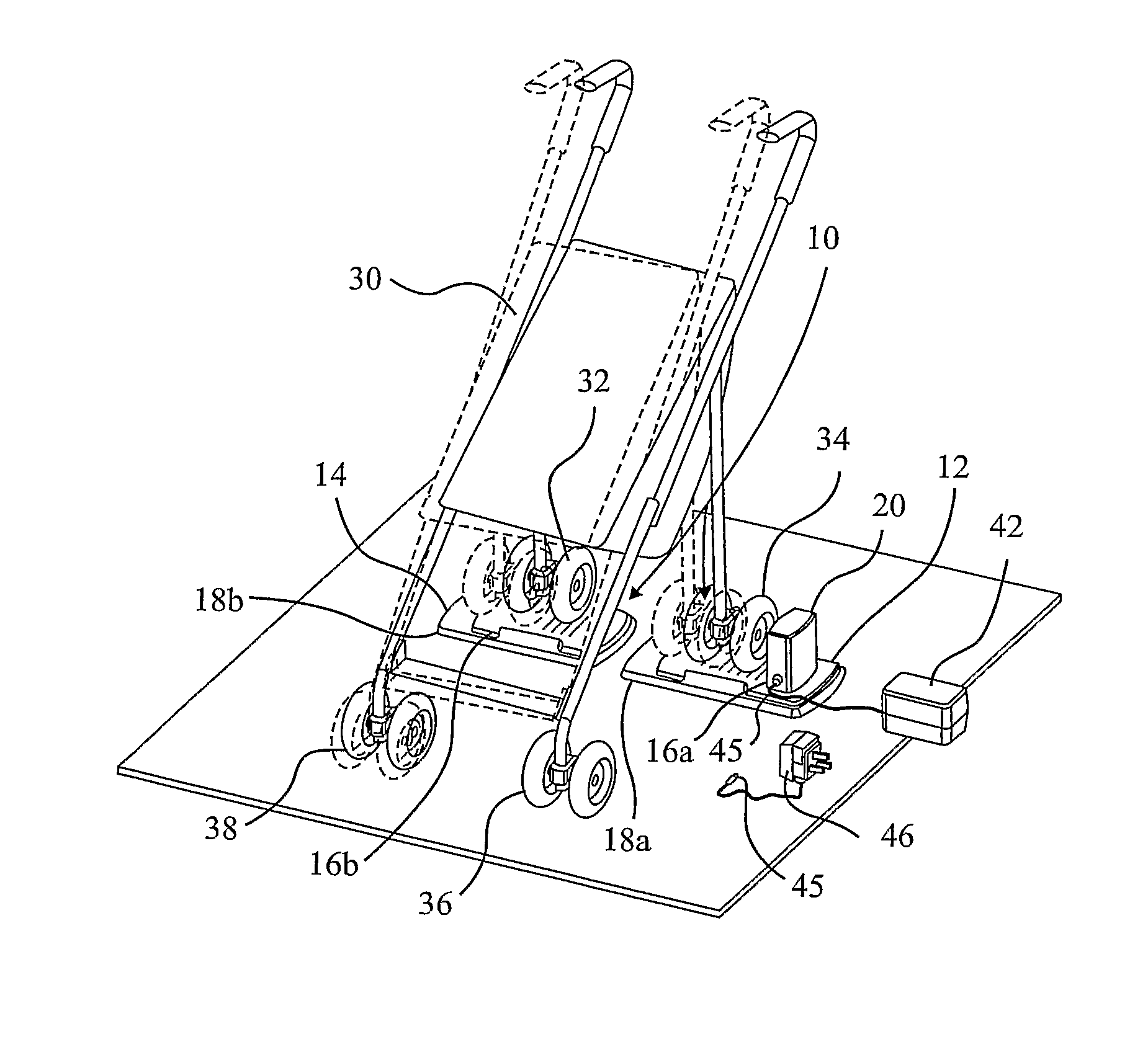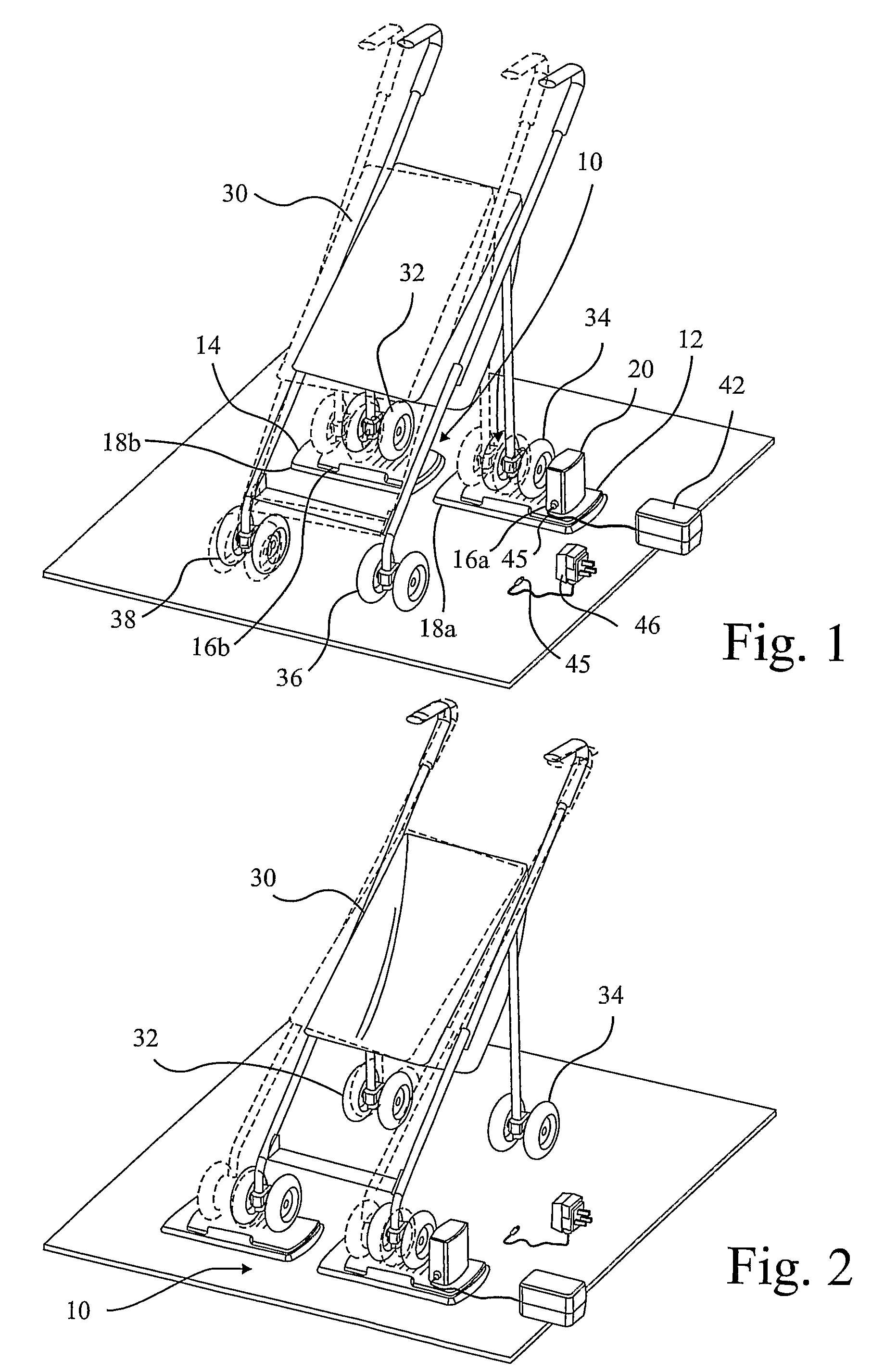Infant stroller rocking device
a technology for strollers and strollers, which is applied in the direction of children's furniture, carriage/perambulator accessories, sofas, etc., can solve the problems of destabilising the stroller, affecting the stability of the stroller, and affecting the safety of the stroller
- Summary
- Abstract
- Description
- Claims
- Application Information
AI Technical Summary
Benefits of technology
Problems solved by technology
Method used
Image
Examples
Embodiment Construction
[0047]For the avoidance of doubt, the terms “buggy”, “stroller”, “pram” etc are used herein interchangeably and refer to any wheeled infant carrier, including a cot or bed provided with wheels.
[0048]FIGS. 1 to 6 show a rocking device 10 in accordance with the present invention. The device 10 comprises a drive unit 12 and a slave unit 14. Both have similar constructions comprising a platform 16a,b and a base 18a,b. As explained further below, each platform is arranged to be freely translatable back and forth over the respective base. In the case of the slave unit 14, the platform 16b is simply free to move back and forth over the base 18b. However, with the drive unit 12, the platform 16a is provided with a housing 20 for a motor which is arranged to drive the platform 16a back and forth over the base 18a.
[0049]In FIGS. 1 and 2, a four wheeled buggy 30 is shown, with its rear wheels 32,34 supported respectively on the platforms 16b,a of the slave unit 14 and drive unit 12. When the ...
PUM
 Login to View More
Login to View More Abstract
Description
Claims
Application Information
 Login to View More
Login to View More - R&D
- Intellectual Property
- Life Sciences
- Materials
- Tech Scout
- Unparalleled Data Quality
- Higher Quality Content
- 60% Fewer Hallucinations
Browse by: Latest US Patents, China's latest patents, Technical Efficacy Thesaurus, Application Domain, Technology Topic, Popular Technical Reports.
© 2025 PatSnap. All rights reserved.Legal|Privacy policy|Modern Slavery Act Transparency Statement|Sitemap|About US| Contact US: help@patsnap.com



